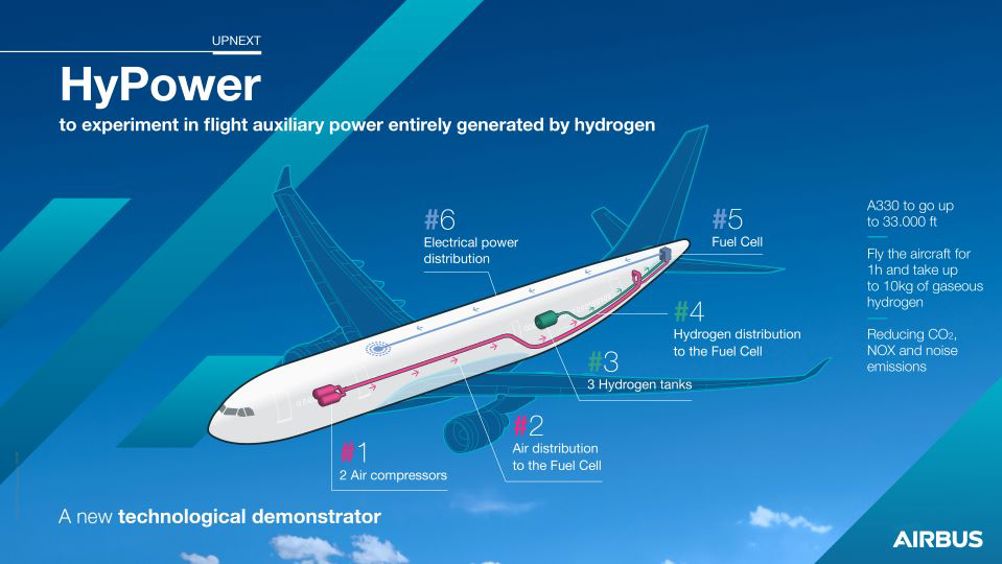In conventional airliners, the Auxiliary Power Unit (APU) is a small additional engine that runs on traditional jet fuel and helps to provide the energy required to power several non-propulsive aircraft functions, such as air conditioning and onboard lighting.
Dubbed HyPower, the hydrogen fuel cell demonstrator also aims to reduce the emissions of CO2, nitrogen oxides (NOx) and noise levels associated with a traditional APU.

According to Airbus, new design features and integration techniques will also contribute to maturing the safety and operations of future hydrogen-powered aircraft and will demonstrate the stable operation of a fuel cell in-flight, including its restart.
Related content
“These tests will mark a new step in our decarbonisation journey and ZEROe programme through an ambitious flight demonstration that will take to the air by end 2025,” Michael Augello, CEO of Airbus UpNext said in a statement. “We want to demonstrate the operability and integration of the system, including refuelling the aircraft with hydrogen. We will demonstrate this system in realistic conditions, climbing to 25,000 ft and flying for one hour with 10kg of gaseous hydrogen on board. However, we cannot do this alone and our cooperation with the Spanish Government and external partners will be key enablers of these series of tests.”The project is being led by Airbus’ facilities in Spain. The flight test campaign will utilise a modified Airbus A330 and a ground test bed of the system. Airbus UpNext said it will procure a production unit for renewable hydrogen to fulfil the entire need for the test campaign.











Microplastics evading capture in wastewater treatment
Can anyone provide a link to a credible peer-reviewed study demonstrating toxicity from microplastics? This report uses words like ´potential´ and...